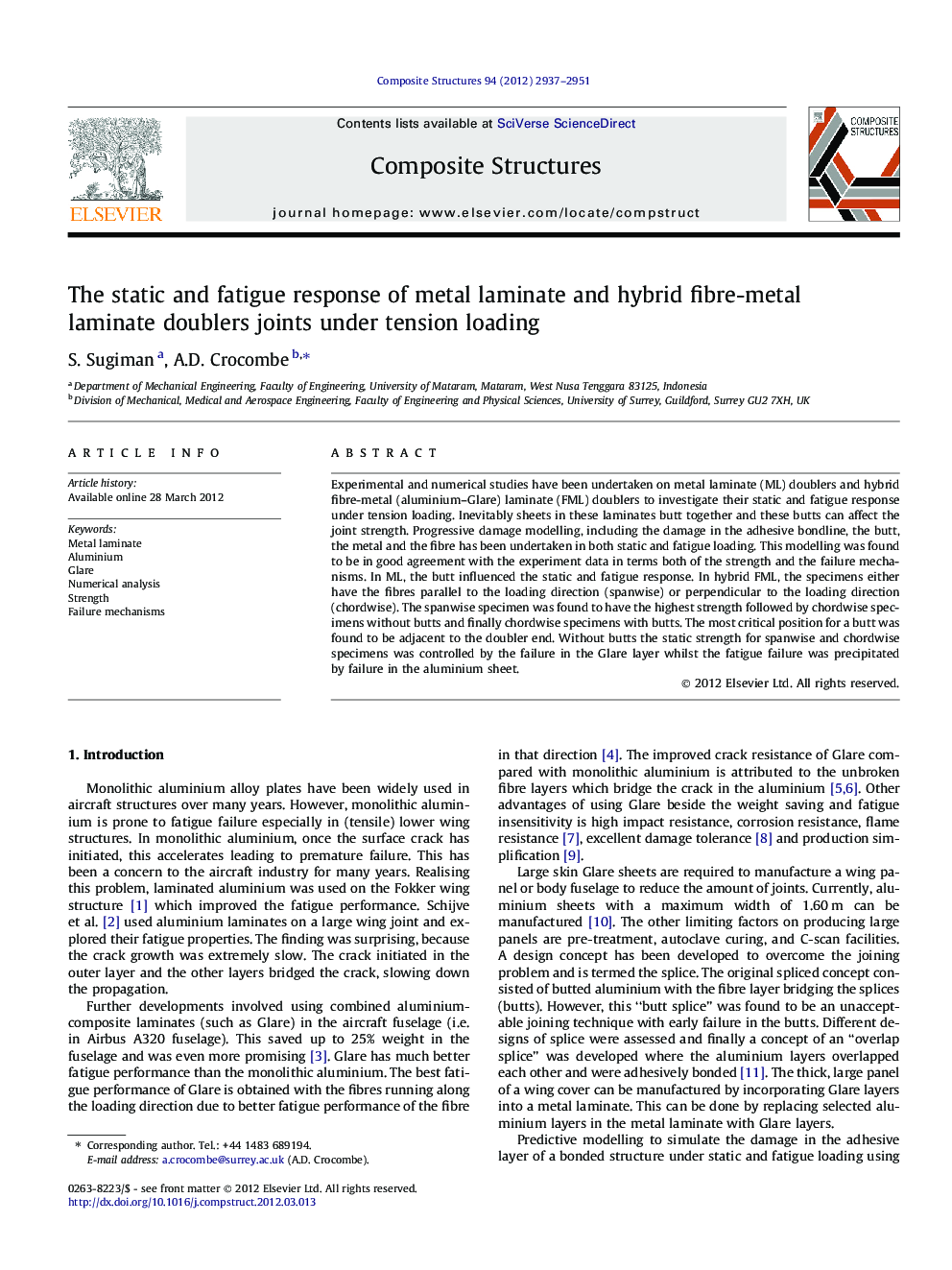| کد مقاله | کد نشریه | سال انتشار | مقاله انگلیسی | نسخه تمام متن |
|---|---|---|---|---|
| 253074 | 502984 | 2012 | 15 صفحه PDF | دانلود رایگان |

Experimental and numerical studies have been undertaken on metal laminate (ML) doublers and hybrid fibre-metal (aluminium–Glare) laminate (FML) doublers to investigate their static and fatigue response under tension loading. Inevitably sheets in these laminates butt together and these butts can affect the joint strength. Progressive damage modelling, including the damage in the adhesive bondline, the butt, the metal and the fibre has been undertaken in both static and fatigue loading. This modelling was found to be in good agreement with the experiment data in terms both of the strength and the failure mechanisms. In ML, the butt influenced the static and fatigue response. In hybrid FML, the specimens either have the fibres parallel to the loading direction (spanwise) or perpendicular to the loading direction (chordwise). The spanwise specimen was found to have the highest strength followed by chordwise specimens without butts and finally chordwise specimens with butts. The most critical position for a butt was found to be adjacent to the doubler end. Without butts the static strength for spanwise and chordwise specimens was controlled by the failure in the Glare layer whilst the fatigue failure was precipitated by failure in the aluminium sheet.
Journal: Composite Structures - Volume 94, Issue 9, September 2012, Pages 2937–2951